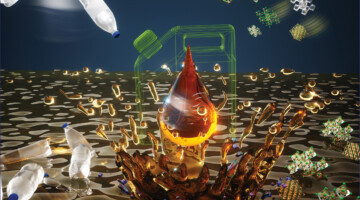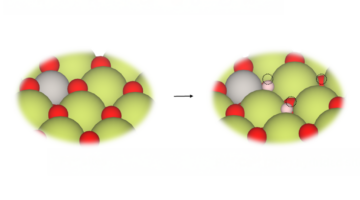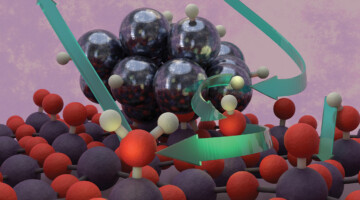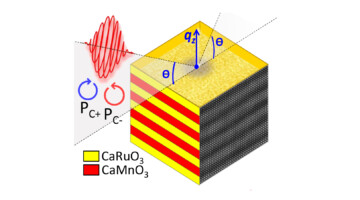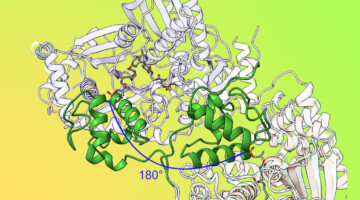Researchers found a way to turn single-use plastics (e.g., grocery bags and packaging) into useful liquid fuels, like components of gasoline or diesel, without needing high heat, rare metals, or added chemicals. The work presents a promising pathway to address the global plastic waste crisis, with both environmental and economic advantages. Read more »
A New Twist for Superconductivity in Bilayer Graphene
In a study of twisted bilayer graphene (TBG) systems, researchers found intriguing spectroscopic features in a superconducting “magic-angle” TBG—features that are absent in non-superconducting TBG. The results provide crucial information on superconductivity in magic-angle TBG for next-gen electronics and advanced energy technologies. Read more »![]()
ALS in the News (June 2025)
-
- Science power-up: The most exciting thing in microelectronics
- The technologies fueling the future of fusion
- Shape-shifting hybrid materials offer bright future for solar and LED innovation
- Catalysts get a boost with atomic-level tinkering
- QSA harnesses quantum devices and techniques to explore physics
Catalysts Get a Boost with Atomic-Level Tinkering
A research team led by Berkeley Lab designed and fabricated catalysts by precisely tuning the co-localization of active metals—key catalytic centers for specific steps in reaction pathways—offering a new level of control over catalytic performance. Read more »
Catching “Hydrogen Spillover” onto a Catalytic Surface
Researchers uncovered the precise mechanism of hydrogen spillover (H2 splitting and migration) onto a catalytic surface by watching it happen under various conditions. The research lays the foundation for designing more efficient catalysts and storage materials essential for next-generation hydrogen energy technologies. Read more »![]()
![]()
ALS in the News (May 2025)
-
- Advances bring us closer to new ‘light-squeezing’ technologies
- A toxic pit could be a gold mine for rare-earth elements
- From sequence to structure: A fast track for RNA modeling
- Making science: Inside Lawrence Berkeley National Lab
- Compute this: Six ways Berkeley Lab is shaping the future of microelectronics
- Two Berkeley Lab researchers elected to the National Academy of Sciences
- How Berkeley Lab is leading the biology-based industrial revolution
A Deeper Look into Emergent Magnetism at Interfaces
Researchers shed new light on interfacial ferromagnetism in superlattices of alternating magnetic layers. By advancing our understanding of atomic-level interactions at magnetic interfaces, this work expands the scope of traditional interface studies and lays the groundwork for future innovations in magnetic storage and spintronics. Read more »
From Sequence to Structure: A Fast Track for RNA Modeling
RNA isn’t just a genetic messenger—it also folds into complex shapes to drive vital biological processes. Scientists are just starting to understand the many functions of these molecules, and how we can harness them for applications in environmental science, agriculture, and medicine. A powerful new RNA structure prediction tool is here to help. Read more »
Building a Gated-Access Fast Lane for Ions
In organic conductors where charge is carried by both electrons and ions, scientists have discovered a way to make the ions move more than ten times faster than in comparable ion-transport methods. The results could apply to a host of areas, including improved battery charging, biosensing, soft robotics, and neuromorphic computing. Read more »
Deep-Dive Inspection of a Molecular Assembly Line
By locking down certain movable parts of a modular drug-building protein, researchers learned new details about how carrier proteins transfer the product protein between modules. The results offer insights that could enable scientists to design and create new and improved medicines, such as antibiotics, using synthetic biology. Read more »![]()
![]()
- 1
- 2
- 3
- …
- 83
- Next Page »
